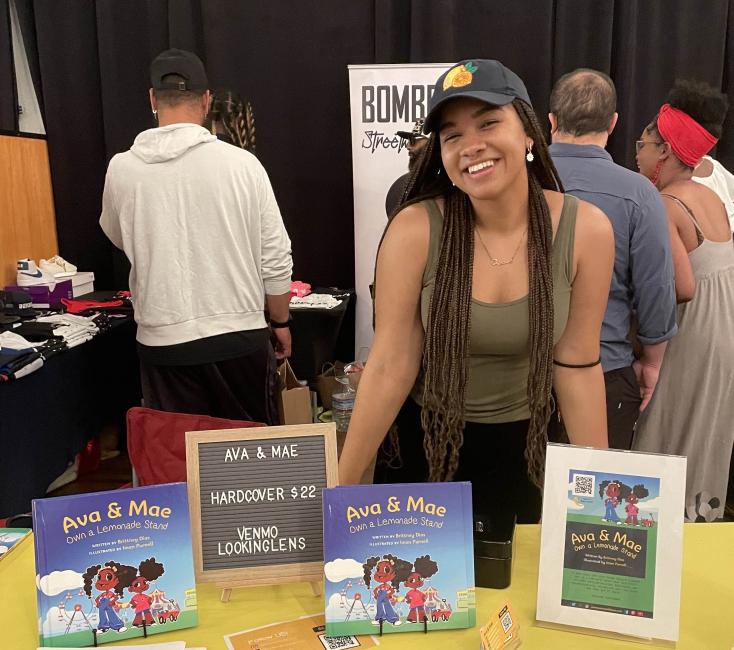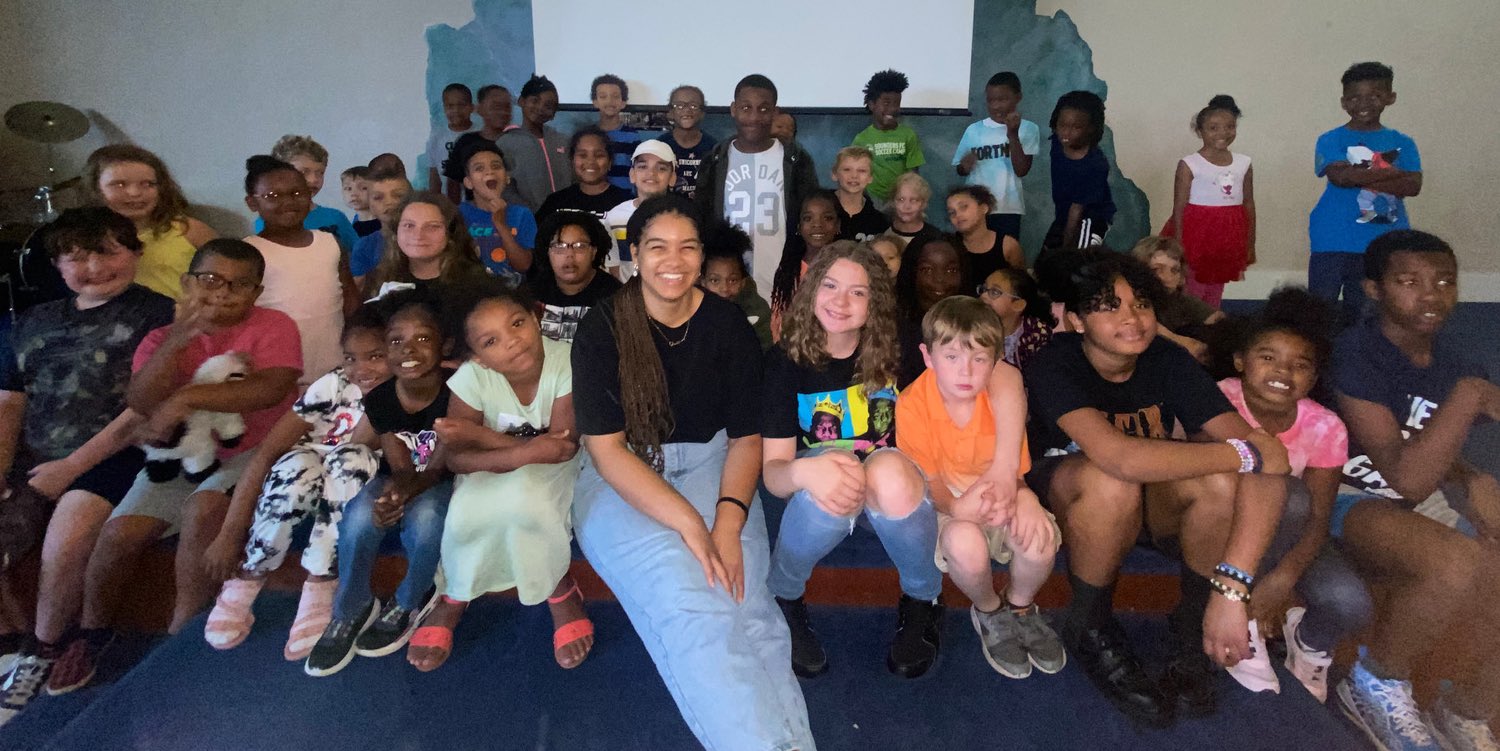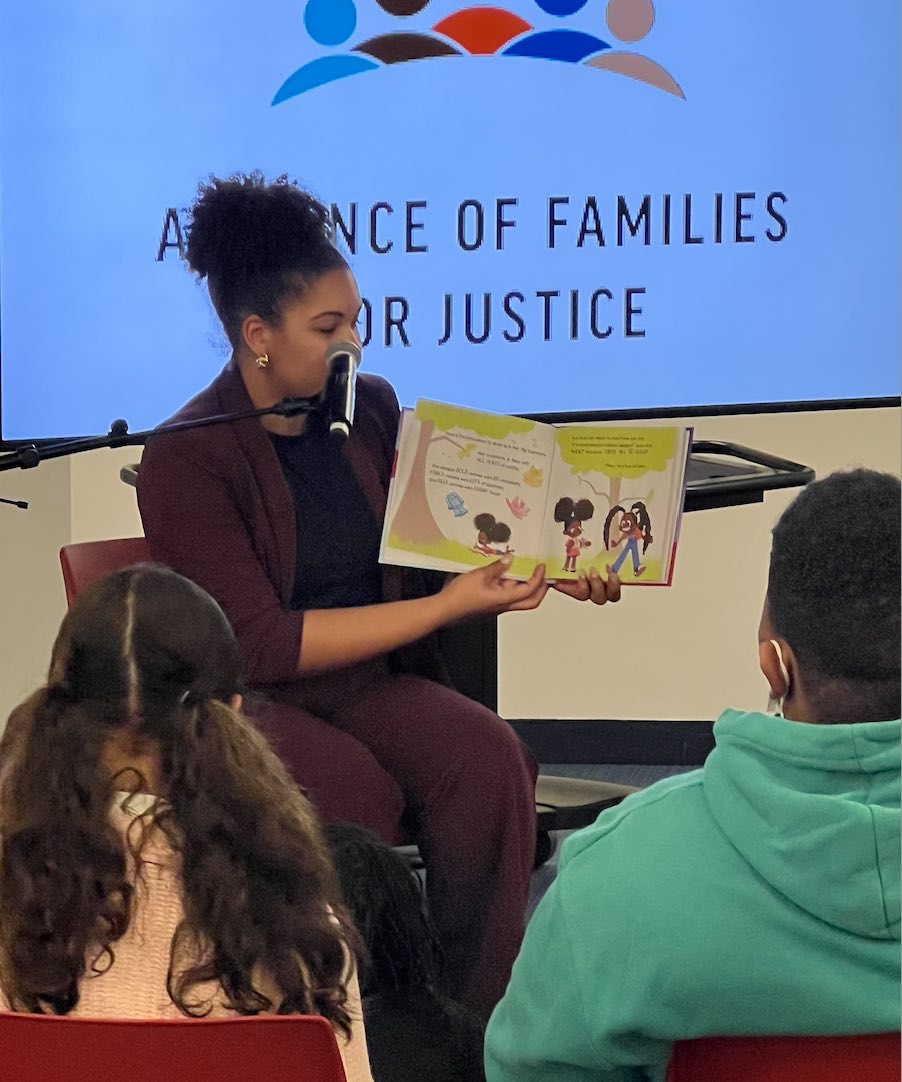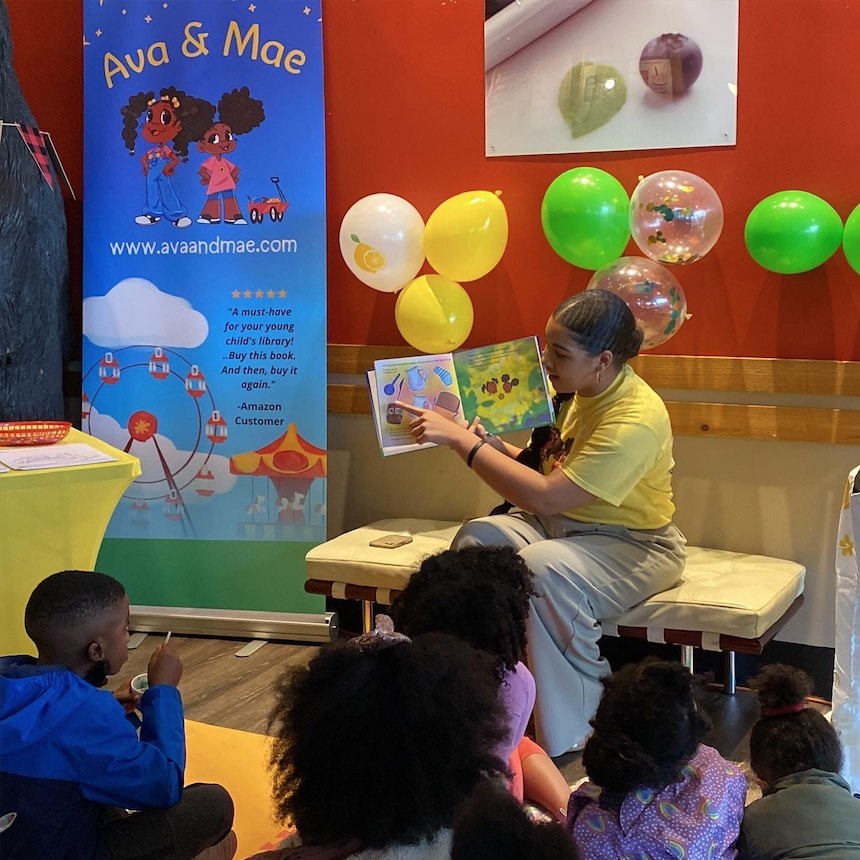
Brittney Dias at Tacoma's Black Night Market
There’s a line Brittney Dias wrote that’s been serving as inspiration for herself and the children she writes for: “No matter the time, no matter the day, Ava and Mae find a way.”
Ava and Mae are two Black girls and protagonists of a children’s book series written by Dias. Their message of perseverance also speaks to the work Dias is committed to, which is to increase diverse representation of main characters in children’s media. While ethnic and racial representation in children’s books has improved in the past two decades, change has been slow: only 13% of children’s books feature a Black character and only 30% feature racially diverse characters or subjects, according to the Associated Press.
The issue of representation is both a public health issue and an entrepreneurial challenge. That’s why, after graduating from the University of Washington School of Public Health in 2021, Dias launched the company, Looking Lens. The business creates stories to inspire Black and brown children to reach their full potential, specifically through centering protagonists who are people of color in media, like children’s books. The business has published two books written by Dias and is inspiring children across the country.
“Representation, or the lack of representation, has so much to do with white supremacy. A lot of people who have had power taken away from them don't get to take control of their narrative,” Dias said. “That’s what I love about recent media. There’s just so many media outlets where people of all sorts of identities are reclaiming their narratives.”
Along the way, Dias has found an important connection between public health and entrepreneurship: listening to a community’s needs to serve and solve problems.
“As entrepreneurs, you can't take your solution and try to convince your target market that this is what they need,” Dias said. “That’s really similar to public health. If you're serving a community, just like a target market, you can’t take whatever your solution is and say, ‘This is what you need.’ You need to go to them, they tell you what they need, and you adjust accordingly.”

Brittney Dias with children at the Tacoma Community Center
Addressing community need for representation
Sitting in Black Bear Frozen Yogurt in her hometown of Tacoma, Dias read aloud a storybook she’d written to a group of children. The book was called “Ava and Mae Own a Lemonade Stand,” and is about two young Black girls who start their own business. It was the first community reading event Dias had ever hosted for her newly published book. A young girl sat directly in front of Dias, and pointed at the characters, then touched her own hair. “Wow,” she told Dias. “I love their hair. It looks like my hair!”
Dias knew the feeling: she had written the storybook with the intent to increase racial diversity in children’s stories. As a child herself, the classmates in the schools Dias attended were mostly white, and the shows, movies and books she read featured mostly white characters. The media that did feature Black characters often centered the stories around racial trauma. The lack of positive representation of her identity had an impact, Dias said.
“I think that if I had more books that represented me, I would have been able to be more proud of who I was early on, and it would have helped the experience of growing up in predominantly white classrooms,” Dias said. “There's very little representation of Black girls being badasses and setting goals, following them and working as a team.”
Media can have a positive and negative impact on young children, who process messaging about race and ethnicity from a young age. The nonprofit Common Sense synthesized over 100 pieces of academic research on the topic and found that stereotypes or other harmful portrayals of racial or ethnic groups can negatively impact children’s sense of self as well as how they view others of different races and ethnicities. But positive portrayals of their own ethnic-racial group can increase a child’s happiness and positive feelings toward their status and appearance.
“Once you see somebody who looks like you just having a good time, not only does it impact the way you view yourself, but it impacts the way that the broader society sees people like you, which changes attitudes overall,” Dias said.
The Ava and Mae books layer in different types of identity, from Black children, to Black girls to young women who are entrepreneurs, to young people who defy gender norms, such as when one of the characters wears a suit at a fashion show. These are all intentional ways Dias tries to honor different layers of people’s identities through literature.
This connection between representation in art and public health became especially apparent to Dias when she took an elective class at the UW on Black aesthetics in the twentieth century, taught by Assistant Professor La TaSha Levy. There, she learned how artists, musicians and writers protested through their artistic expressions, and how art was used as a method of political and cultural resistance.
“All of that ties back to well-being because if your community is suffering, if you're experiencing any sort of discrimination — in this context it’s media discrimination — you’re going to suffer, you’re not going to be well, and especially not as well as people who benefit from white supremacy,” Dias said.

Entrepreneurship for Black liberation
Dias had never planned to start her own business or publish a book right after graduation. She began as a pre-med student at the UW, and then switched to the Public Health-Global Health major because she said she wanted to study a more holistic and population-based approach to health care and wellness.
“Public health gave me a really informed perspective on society and on rights and social justice,” Dias said.
The COVID-19 pandemic began her junior year. That summer, communities across the U.S. joined racial justice protests and social activism in response to the murder of George Floyd. Dias wanted to do something that would support Black liberation, and was motivated by the idea of economic power.
“In the world we live in, if you don't have economic leverage, you're not going to get anywhere,” Dias said. “We need to build Black business ownership so we can continue to build Black wealth.”
So Dias began a racial equity advisor internship at a startup focused on supporting Black entrepreneurs. During that internship, she and the founder brainstormed ways to share the message of entrepreneurship with Black children. When he suggested a children’s book, Dias ran with it.

Working from a slidedeck, she drafted the concept for “Ava and Mae Own a Lemonade Stand.” The startup approved Dias for funding, which allowed her to create the business Looking Lens to launch other types of media like this book. A year later, Dias published the second Ava and Mae book, “The Fabulous Fashion Show”, where Ava and Mae notice a need in the market for back-to-school fashion, and monetize Mae’s passion for fashion.
Dias has since moved to New York City to continue promoting the books and running her business. This year, Looking Lens is focused on increasing its online presence by creating a gaming platform for children to engage with the Ava and Mae characters.
Being a first-time business owner is challenging, and requires being comfortable with failing and rebounding with tenacity. Dias is not dissimilar from her own characters, Ava and Mae. She sometimes finds herself turning to them for inspiration during times of discouragement, and mulls over how they’d handle a problem.
The children Dias meets at reading events are also finding inspiration in the characters’ entrepreneurial energy. Children have come up to Dias after a book reading and shared that they now feel like they can create a business or a TV show after seeing young children like themselves be ambitious.
One of the best moments for Dias comes when she’s sitting in front of a group of children, reading the Ava and Mae books. Every time the two girls overcome a challenge, the motivational mantra Dias wrote for them appears. Children in the audience pick up on this quickly, and start to chant the line back to Dias, until the whole room is filled with the cheer: “No matter the time, no matter the day, Ava and Mae find a way.”
Learn more about Brittney Dias and her business Looking Lens via Instagram, Twitter, Facebook, Linktree, Looking Lens